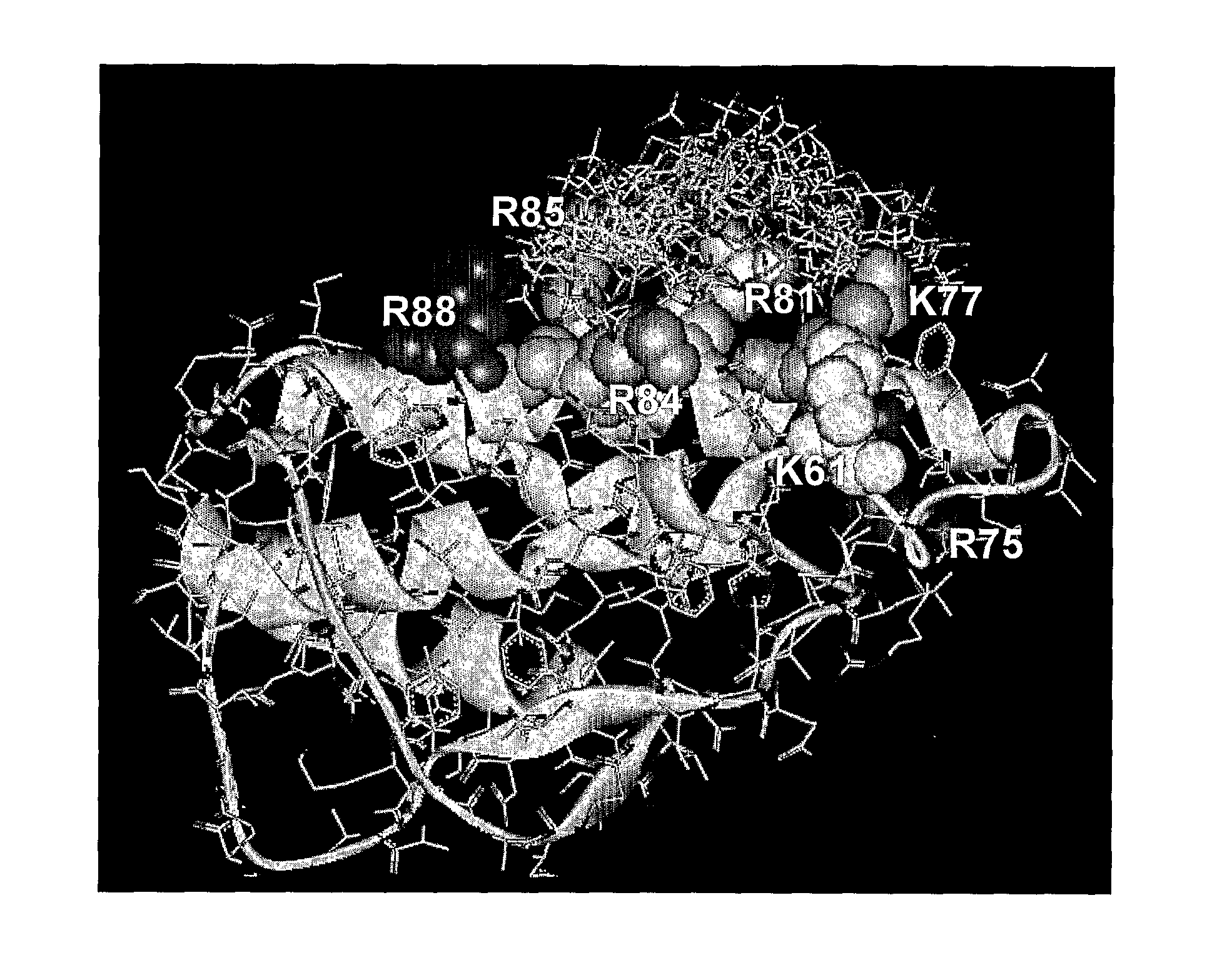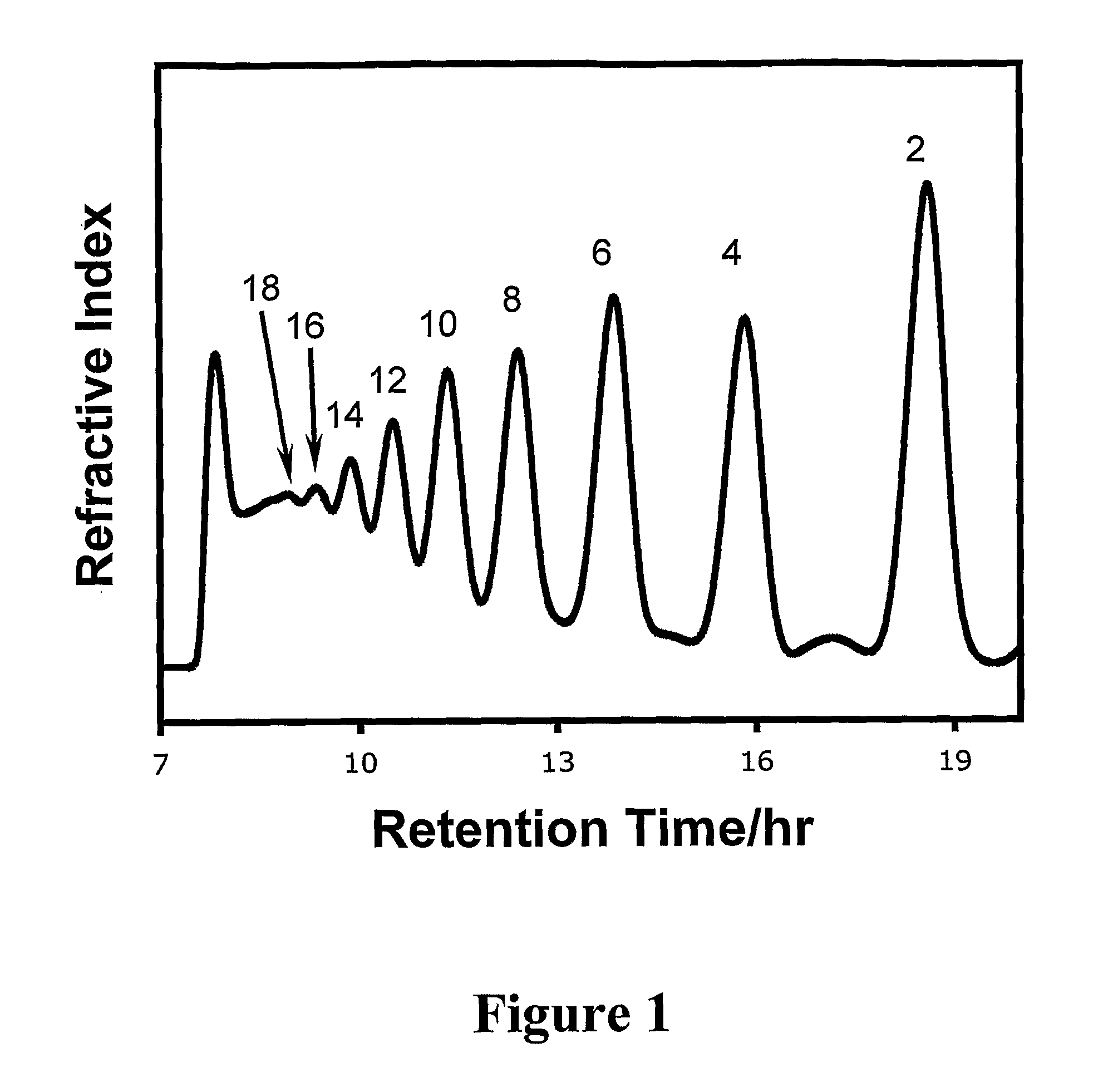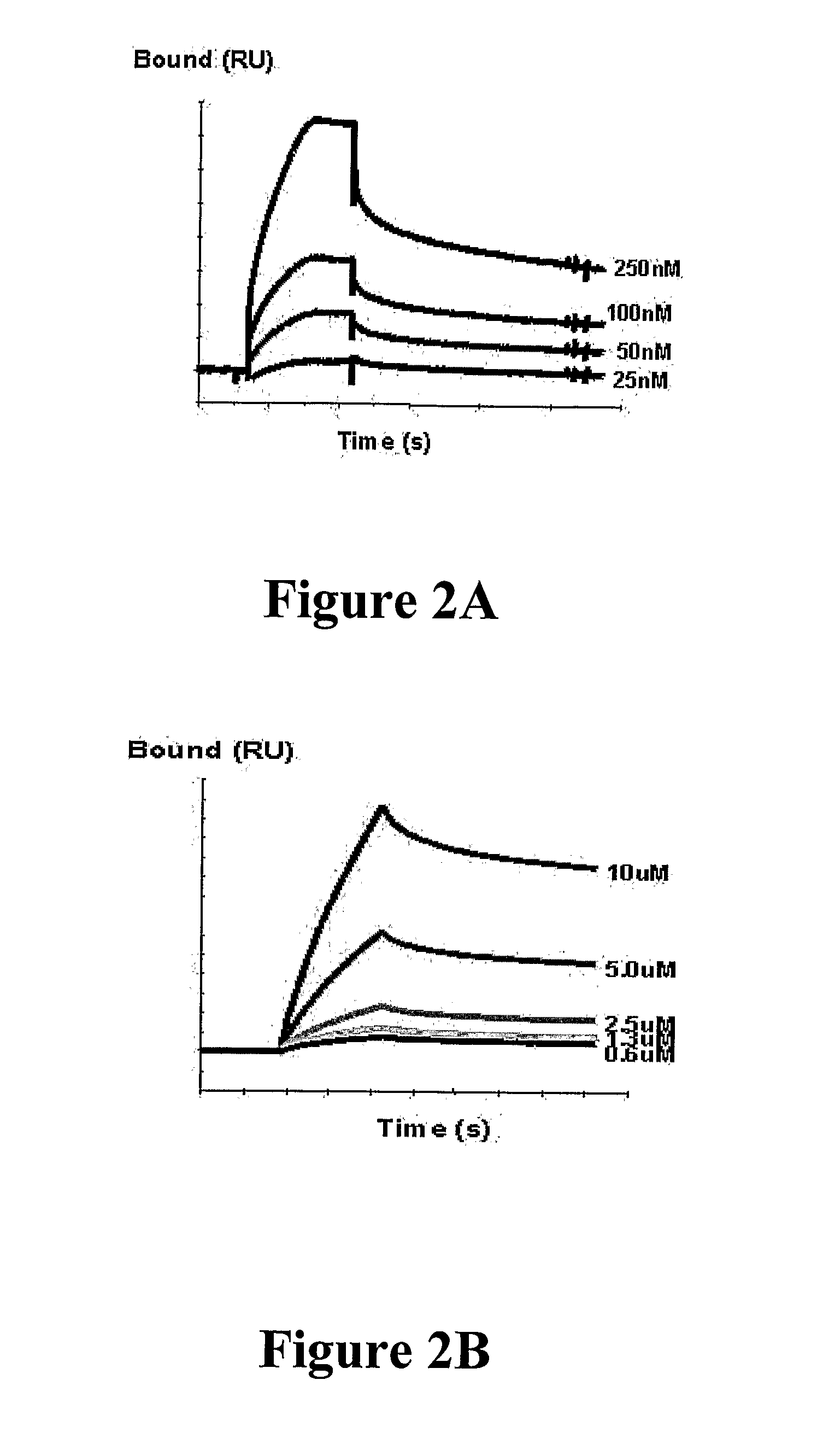Therapeutic Heparins and Their Binding to Interleukins 4 and 5 and Pecam-1
a technology of interleukin 4 and 5 and heparin, which is applied in the field of therapeutic heparins and their binding to interleukin 4 and 5 and pecam-1, can solve the problems of difficult identification of an antagonist with a sufficiently broad spectrum of activity, complex binding of sulfated gags and proteins in the anti-coagulation cascade, and heparin with platelet factor iv (pf-iv)
- Summary
- Abstract
- Description
- Claims
- Application Information
AI Technical Summary
Benefits of technology
Problems solved by technology
Method used
Image
Examples
example 1
Generation of a Library of DP 4-DP 20 Oligosaccharides from E. coli K5 Polymer
[0252]Tailoring the Length of the E. coli K5 Polymer
[0253]The truncating of the K5 capsular polysaccharide is achieved at one of a variety of stages: on the natural polysaccharide, the de-N-acetylated polysaccharide or the sulfated polysaccharide. The methods employed to truncate the polysaccharide include enzymatic, chemical, thermal and ultrasonic protocols. (Alban and Franz, 2001, Supra).
Enzymatic Truncation
[0254]Enzymatic truncation of the polysaccharide is also possible at various stages. Heparinase III, Heparinase II and Heparinase I enzymes cleave the sulfated K5 polysaccharide to give lower molecular weight fragments. Heparinase III truncates the natural K5 polysaccharide to the desired length of polymerization (Nader et al., 1999, Supra). β-D-glucuronidase and chondroitinase AC will degrade the natural unmodified K5 polysaccharide (Lidholt et al., 1997, Supra).
Chemical Truncation
[0255]The presence...
example 2
Generation of a Library of DP4-DP20 Oligosaccharides from Clitosan
Tailoring the Length of the Chitosan Polysaccharide
[0260]
Enzymatic Truncation
[0261]The enzymatic degradation of chitin and chitosan using chitinase enzymes is well understood [Horwitz et al., Chitin, Chitosan and related enzymes, Zikakis J., (ed.) Academic Press, Orlando, Fla. (1984)].
Chemical Truncation
[0262]The presence of an acetyl group on the glucosamine unit within the chitin polysaccharide effectively protects this glycosidic linkage from cleavage when exposed to nitrous acid. The selective removal of the N-acetyl groups through the agency of hydrazine is a well known procedure (Shaklee and Conrad, 1986, Supra; Shively and Conrad, 1976, Supra; Shaklee and Conrad, 1984, Supra).
[0263]The truncation of the glucosamine polymer is then achieved through the use of nitrous acid that enables the cleavage of the α-glycosidic in heparan sulfate, dermatan sulfate, keratan sulfate and chondroitin sulfate. The chitosan glyc...
example 3
Phosphorylation of GAG Oligosaccharides
[0266]6-O sulfate is the easiest O-sulfate to hydrolyze, providing a way to access the free 6-OH. The free 6-OH is then phosphorylated to give the 6-O phosphate. Sulfate and phosphate esters have been shown to be equipotent in many compounds. It is also possible to N-phosphorylate the glucosamine residue.
[0267]The selective phosphorylation of a hydroxyl group is readily achieved using the phosphoramidate-oxidation method. (Vieira de Almeida et al., 1999, Supra; Dubreuil et al., 1999, Supra and references cited therein). This method has been widely employed for the formation of inositol phosphates, nucleotides and oligonucleotides. Alternatively, several other more rapid methods for the introduction of a phosphate group could be employed such as phosphoryl oxychloride in the presence of pyridine followed by aqueous hydrolysis. It is also be possible to enzymatically phosphorylate these oligosaccharides through the agency of a promiscuous hexose ...
PUM
| Property | Measurement | Unit |
|---|---|---|
| Molar density | aaaaa | aaaaa |
| Molar density | aaaaa | aaaaa |
| Fraction | aaaaa | aaaaa |
Abstract
Description
Claims
Application Information
 Login to View More
Login to View More - R&D
- Intellectual Property
- Life Sciences
- Materials
- Tech Scout
- Unparalleled Data Quality
- Higher Quality Content
- 60% Fewer Hallucinations
Browse by: Latest US Patents, China's latest patents, Technical Efficacy Thesaurus, Application Domain, Technology Topic, Popular Technical Reports.
© 2025 PatSnap. All rights reserved.Legal|Privacy policy|Modern Slavery Act Transparency Statement|Sitemap|About US| Contact US: help@patsnap.com



